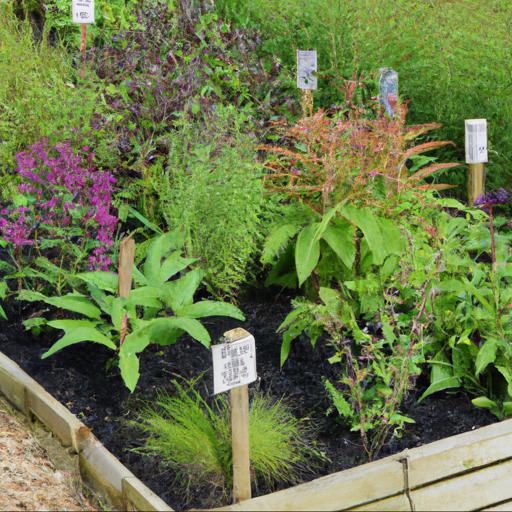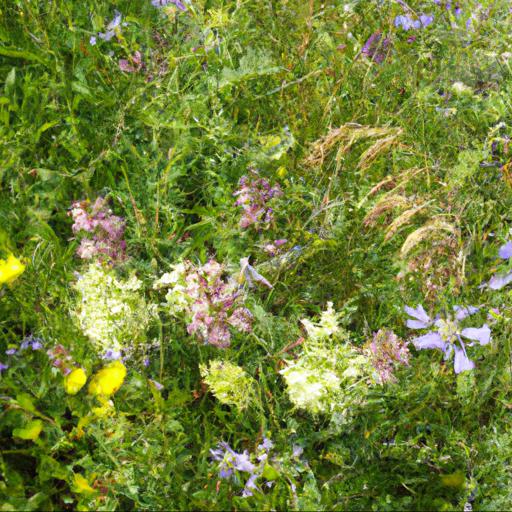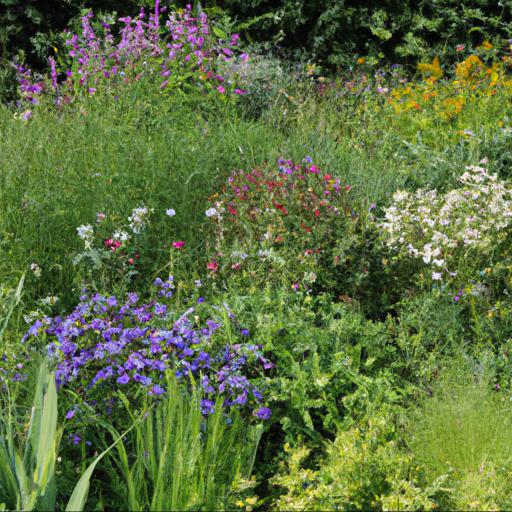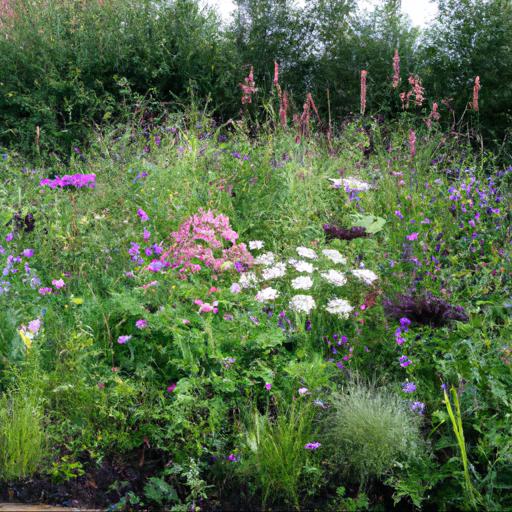Are you looking for some interesting ideas on how to combine UK native species in your garden? If so, you’ve come to the right place! In this blog, we’ll explore different plant combinations of UK native species that can add colour and texture to your outdoor space.
We’ll discuss how to create a diverse and balanced garden, as well as how to choose the best plants for your climate and soil type. With our help, you’ll be able to create a beautiful and inviting garden full of UK native species!
Benefits of planting uk native species

The advantages of planting uk native species in the garden should not be overlooked. Native species have naturally adapted to the unique and diverse conditions found throughout the UK, which allows them to thrive and spread their roots deeper. As a result, these plants can provide a great source of beauty and wildlife to any garden.
Planting combinations of uk native species is a surefire way to bring a little British charm to your garden. There are many benefits of planting uk native species together.
For instance, a combination of a wide range of species may provide a greater opportunity for wildlife to live in the garden, as a wider variety of animals, birds and insects may be attracted to the different plants. This increased biodiversity can attract numerous pollinators, such as bees, butterflies and other insects—important for encouraging the growth of food-bearing plants. Planting a mix of UK natives can also make the garden look more attractive, with a large selection of shapes, sizes, colours and textures.
Planting varieties with differing flowering times can help to keep your garden continuously in bloom throughout the year, allowing its beauty to shine through. To get the most out of the planning process it can be useful to study the different soil types in the area, as this will help to determine the right combination of species.
In conclusion, planting combinations of native UK species has many advantages and can provide a great asset to the garden. There is a wide range of plants to choose from, so it can be helpful to do some research on the areas soil type to pick the best combination. Ultimately, this mix of native species can not only provide a stunning display of colour and texture, but also attract an array of wildlife, helping to make the garden a hub of life and beauty.
Tips for combining uk native species

:Having a garden with plants that are native to the UK is a great way to bring nature into the environment you live in. It can be a challenge to combine the right balance of UK native species, so here are some tips to keep in mind for creating an inviting, naturalised plant combination.
First, consider the scale of the planting area. If planting a series of native perennials and shrubs, group the plants by height. This will create an aesthetically pleasing look that also offers a variety of habitats for the wildlife.
Choose plants that are suitable for the soil and sunlight levels within the garden. For example, if planting in a shady area, oxalis or wood anemone are great options, while in sunny areas purple loosestrife, ragged robin, and lesser knapweed are ideal. To ensure a variety of wildlife visits, aim to mix up the flowering season of your plants.
Plant a combination of plants with spring, summer, and autumn flowering periods. If including tree species, such as hawthorn, rowan or birch, make sure to leave plenty of space around them in order to give them enough room to flourish.
For example, hawthorn can grow up to 8m high, and can spread up to 10m wide if planted plentifully. Finally, create a habitat for wildlife by including herbaceous plants such as foxglove, daisy, black medick, and honeysuckle. These plants offer shelter and food for wildlife, and will help to attract more wildlife to the garden.
Planting a combination of UK natives will create a vibrant and inviting garden, with the added bonus of providing a home for some of our native wildlife.
Popular plant combinations of uk native species

As a UK garden expert, I understand the importance of making the most of the natural beauty of the UK. Plant combinations of UK native species can really turn a garden into a haven of relaxation, peace, and beauty. By carefully selecting a range of plants to create a stunning display, it’s possible to bring the best of the outside indoors.
When it comes to combining plants, there are a few key steps to consider. Firstly, you should think about the plants’ colour schemes, shapes, sizes and textures.
This will help to create a cohesive display and ensure the plants complement each other. Native species should work well together as they generally have similar requirements when it comes to sunlight, soil type and water. Next, you should think about the growth habit of the plants.
Is one a shrub, while the other is a climber? Does one flower in the summer, while the other in the winter?
By considering the timeline of a plant’s growth, you can ensure it’s at the peak of its beauty when combined with the other plants. For example, a combination of Clematis montana and Viburnum tinus could make for an interesting mix.
The Clematis has beautiful flowers in spring and the Viburnum has glossy berries in autumn and winter. Finally, it’s important to consider the natural environment that the plants will be living in. If your area has a higher rainfall, choose plants that prefer more moisture.
Equally, if your area is dry, try to find drought-tolerant species. This can help the plants to last longer and look more natural. An example of this kind of combination is Honeysuckle and Hazel. The Honeysuckle provides a vibrant display in the summer, while the Hazel will provide a good level of colour in the autumn months. In conclusion, creating beautiful combinations of UK native species can turn an ordinary landscape into something extraordinary and truly bring the best of the outdoors in. With careful consideration of colour, size and shape, as well as growth habit and environmental factors, it’s possible to create a beautiful display that will provide the perfect backdrop all year round.
How to care for uk native species combinations
As a UK garden expert, I know that one of the most stunning ways to make your garden a thing of beauty is to use plant combinations of native UK species. Creating something that not only looks great but also helps to sustain the local natural habitat is a great way to show off your horticultural skills.
The UK is actually home to a range of different habitats, and each of them has their own array of native plants, so you can create an amazing range of combinations. From wildflower meadows to mountain breezy heaths and from colour block cottage gardens to woodland dapples, there are so many possible combinations that your garden could be the envy of everyone. The trick to achieving the best garden is to be aware of how plants affect each other.
Knowing what combinations will best flourish in your garden is key; raise the light levels with some higher growing trees, mix evergreen and deciduous species, and create a graduated layering. To achieve a stunning look in the British climate, aim for combinations of native shrubs and perennials that love a lot of sun and are bred to survive in drought, as well as natives tolerant of shadier, damper locations. It’s also important to think about flowers covering all seasonal points, as you can use some great blooms from winter to late summer.
Native UK species like Cirsium rivulare ‘Atropurpureum’ for its deep purple, thistle flowers and purple stems, or Eupatorium cannabinum for its sprays of pink-mauve flowers, can help you achieve all year colours. And of course, don’t forget the evergreens and climbers to keep the garden looking good all year round.
By using combinations of UK native species you can craft a wonderful garden throughout the year, while also helping maintain the local biodiversity. So get out there and start creating beautiful, stunning combinations.
Our video recommendation
Bottom Line
This article explores the benefits of combining UK native species in your garden. Combining native species can create a diverse and vibrant garden that is both aesthetically pleasing and beneficial to local wildlife.
Planting native species can also help to reduce the need for chemical fertilisers and pesticides, making your garden more sustainable. With careful consideration and planning, native species combinations can create a beautiful and wildlife-friendly garden.
FAQ
What are the most popular UK native plant combinations?
Some of the most popular UK native plant combinations include lavender and roses, foxgloves and primroses, and heather and daisies.
What are the benefits of using UK native species in plant combinations?
The benefits of using UK native species in plant combinations include improved biodiversity, increased resilience to climate change, and reduced maintenance requirements. Native species are adapted to local conditions and can provide food and shelter for wildlife, while also requiring less water and fertiliser than non-native species.
What are the best UK native species for creating a wildlife-friendly garden?
Some of the best UK native species for creating a wildlife-friendly garden include wildflowers, shrubs, trees, and grasses. These plants provide food and shelter for a variety of wildlife, such as birds, butterflies, and bees. Other beneficial species include hedgerows, log piles, and ponds.
What are the best UK native species for creating a low-maintenance garden?
Some of the best UK native species for creating a low-maintenance garden include lavender, rosemary, thyme, foxglove, heather, and wildflowers.
What are the best UK native species for creating a colourful garden?
Some of the best UK native species for creating a colourful garden include foxgloves, poppies, cornflowers, lavender, and daisies.
What are the best UK native species for creating a drought-tolerant garden?
Some of the best UK native species for creating a drought-tolerant garden include lavender, rosemary, thyme, sedum, heather, and yarrow.

